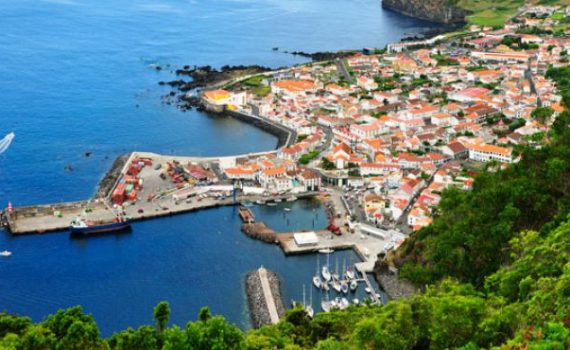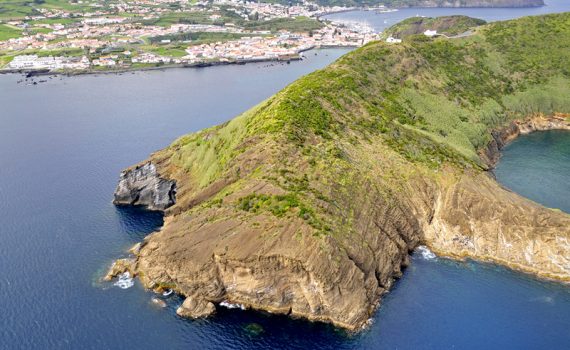At 1,053 m altitude, it’s the highest point of the island’s mountain range from where the other four islands of the central group may be seen. It offers incredibly beautiful views over the roads “decorated” by masses of hydrangea and heath shrubs.
Vila das Velas is a quaint ocean-side town. The buildings of its historic centre reflect various architectural influences and are, in themselves, worth a visit.
Caldeira de Santo Cristo is a hidden natural gem in São Jorge. This secluded coastal lagoon is famous for its calm waters and surrounded by picturesque landscapes. To reach the caldeira, visitors can follow trails that provide a unique experience of connecting with untouched nature.
Located in the Ward of Rosais, it offers visitors the opportunity to see a variety of indigenous plants and vegetation and also features a comfortable leisure area.
Regarded as one of the world’s most beautiful volcanoes. At 1,351 m altitude, it’s Portugal’s highest peak from where all the islands of the central group may be seen.
It’s the largest known lava tube in the Azores. The cave is classified as World Heritage due to its unique natural formation.
Whaling Museums – The Whaler’s Museum at Lajes do Pico depicts the island’s whaling history through a wide range of handicraft and other artefacts related to whaling. The Whaling Industry Museum in São Roque exhibits sperm whale processing equipment.
The maze of volcano-rock walls, the fertile lava fields and the natural vegetation have created an impressive and sui generis environment that is both perfect and grandiose.
Lava and ocean have sculpted figures that, with a bit of imagination, take on the semblance of animals (dog, whale). Here, visitors may also taste and purchase some of the island’s typical liqueurs.
Classified as a special protection area, this is a volcanic cone that affords a great view over the bay of Porto Pim and the city of Horta.
Horta City – Built in the scenic landscape lying between two bays, its charming streets have witnessed five hundred years of history since it was first founded.
A deep crater lined with the Island’s indigenous vegetation, it’s one of island’s havens for its laurel forest. The majestic Pico Island may also be seen from this location.












